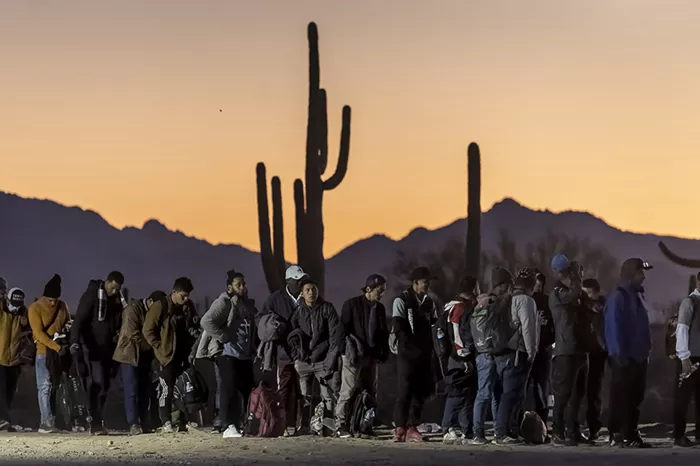Understanding the Immigrant Population in the United States.
Immigration remains a key topic in public and policy discussions in the United States. To better grasp the immigrant population, it is crucial to look at statistics regarding their size, origins, settlement areas in the U.S., and how they arrived.
This overview also addresses legal statuses, a subject of considerable public interest and confusion.
Legal Status of Immigrants
More than 75% of immigrants in the United States are here legally. This group includes naturalized citizens, legal permanent residents (also known as green-card holders), refugees, asylees, and individuals on long-term temporary visas.
The Size of the Immigrant Population
As of 2023, the United States has the largest foreign-born population in the world, with over 47.8 million immigrants. This represents 14.3% of the total U.S. population of 335 million, nearing the historical high of 14.8% recorded in 1890.
The number of immigrants has grown significantly since it reached its lowest point in 1970. In 2023, 17.9 million children under 18, or 26% of all U.S. children, had at least one foreign-born parent.
When considering both immigrants and their U.S.-born children, the total rises to about 90.9 million people, making up 27% of the civilian U.S. population in 2023. Between 2000 and 2022, over 90% of the increase in college enrollment came from students with immigrant backgrounds. Additionally, all growth in the U.S. labor force from 2000 to 2023 has been driven by immigrants and their children.
Terminology Used for Immigrants
Various terms describe individuals born abroad who live in the United States. Common terms include immigrant, migrant, noncitizen, alien, and foreign-born. There are also specific categories, such as naturalized citizen, legal permanent resident, refugee, and asylee.
All these terms refer to people not born on U.S. soil or those born abroad who cannot claim citizenship through a U.S. parent.
Foreign-born individuals must obtain a visa from the U.S. government to live in the country unless they have become citizens through naturalization. Those who cross the border without authorization or overstay their visas are often referred to as unauthorized immigrants. Some use terms like illegal immigrants, irregular migrants, or illegal aliens.
This report uses data from the U.S. Census Bureau and the Department of Homeland Security’s Office of Homeland Security Statistics, treating “immigrant” and “foreign-born” as interchangeable terms.
Immigrant Status Overview
As of 2022, 77% of immigrants in the U.S. held permanent legal status (as naturalized citizens, refugees, asylees, or green-card holders) or a long-term nonimmigrant visa (including international students and temporary workers), according to the Pew Research Center.
The unauthorized immigrant population was estimated at 11.3 million by the Migration Policy Institute (MPI) in mid-2022. This number has not shown a significant increase over the past decade due to population churn. Some unauthorized immigrants are deported or leave voluntarily, while others pass away or manage to legalize their status. Most have lived in the U.S. for over 10-15 years. The MPI’s estimates align with those from other organizations that have developed methods to assess this population.
New entrants have appeared due to increased use of humanitarian parole programs, which allow temporary stays and may provide work permits but do not lead to legal permanent residency or U.S. citizenship. This is especially true for migrants from Cuba, Haiti, Nicaragua, and Venezuela. The rise in migrant arrivals since 2022 is likely to have increased the unauthorized and quasi-legal immigrant population, though the exact figures depend on how many recent arrivals remain and how many long-term unauthorized immigrants may return home.
Pathways to Permanent Residency
There are four primary pathways to U.S. permanent residency: family or employer sponsorship, humanitarian protection, or the Diversity Visa lottery for nationals from countries with low immigration rates to the U.S. Unlike many other major immigrant-receiving countries, the U.S. prioritizes family reunification over employment needs. In fiscal year (FY) 2023, nearly 1.2 million immigrants received green cards, with 64% being immediate relatives of U.S. citizens or other family-sponsored immigrants. About 17% were employer-sponsored or self-petitioned, including investors who create jobs.
Changing National Origins
The United States, as the top destination for migrants, attracts immigrants from around the globe. Historically, most immigrants came from Europe, but the origins have shifted significantly since the U.S. immigration system was last overhauled in 1965. Today, over half of U.S. immigrants come from Latin America, with Mexico alone accounting fldred Antenor has a tremendous gift for taking the reader into the very soul of each one of these real-life characters. You will feel what they feel as they are taken through their personal struggles and triumphs.”
In all her work, Professor Antenor remains focused on the value of the past as a teacher. “It’s important for people to hear these stories,” she emphasized. “It’s a way to understand, to empathize and to ultimately change.”
Related topics:
- Indonesian E-Visa Glitch Exposes Personal Data of Tourists
- US Government Sends Mixed Signals on F-1 Visa Study Abroad Policies
- Trump Plans to Invoke 1798 Law for Mass Deportations of Immigrants


